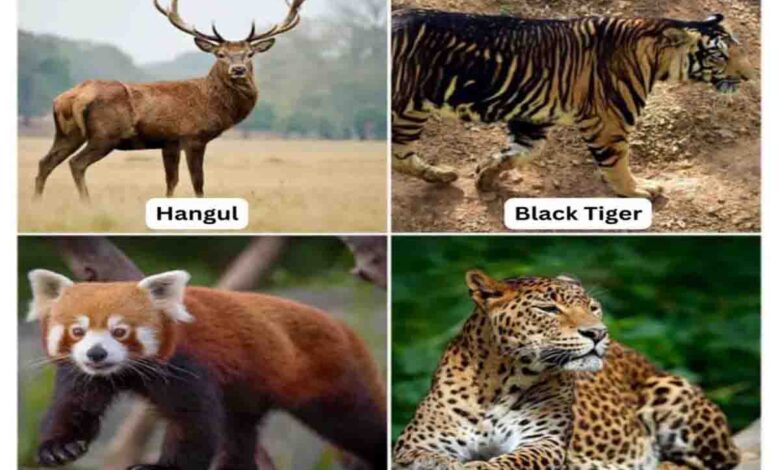World Endangered Species Day

Through various tree planting projects, Grow-Trees.com is playing a major role in expanding wildlife habitats
Friday, 17 MAY 2024 | PNS | DEHRADUN
‘Endangered Species Day’ is observed globally on the third Friday to raise awareness about vulnerable species and their habitats.
In India, according to the data presented in the Rajya Sabha recently, the number of such species has increased from 47 in 2011 to 73 in 2022. To change this scenario, the social enterprise Grow-Trees.com is expanding wildlife habitats through various tree planting initiatives across the country.
Below are some important tree-planting initiatives done by Grow-Trees.com to save the endangered species.
Hanguls
The Kashmir stag, also known as Hangul, is a subspecies of the Central Asian red deer. Classified as Critically Endangered in the Red Data Book of the International Union for Conservation of Nature (IUCN), this species is at imminent risk of disappearing forever. The Trees for Hanguls™ project by Grow-Trees.com is being carried out in the area surrounding Pampore near the Dachigam National Park in Kashmir. Already 120,000 Trees strong, Grow-Trees has committed to expand the plantation target to 175,000 Trees. Once the trees reach maturity, they will enhance the Hangul habitat and foster biodiversity by replenishing the ecosystem.
Black Tigers
Black or pseudo-melanistic tigers are not a separate species or subspecies of tigers but have a distinctive genetic quirk that creates a unique phenotype (increased production of melanin resulting in black skin, feathers, or hair in an animal). According to government data, the Similipal Tiger Reserve is the only habitat where these animals are found in the wild. One of the major causes for the decline in their population is habitat loss. To restore the black tiger habitat, Grow-Trees.com has launched the ‘Trees For Black Tigers’ project in Deogan village in the Mayurbhanj district of Odisha. A total of 150,000 trees have already been planted and the organisation is planning to plant an additional 200,000in Jamukeswar this year.
Red Panda & Asiatic Black Beer
The Pangolakha Wildlife Sanctuary in Sikkim is home to several endangered species found in Northern India, including the Red Panda, the state animal of Sikkim, the Asiatic black bear, musk deer and red fox. Further, the sanctuary boasts rare mammals such as the wild boar, yellow-throated marten and Himalayan striped squirrel as well as the hoary-bellied squirrel of the Callosciurus genus. However, most of these animals in the sanctuary are threatened by increased human activity and climate change, necessitating the restoration of the green cover. The ‘Trees for Himalayan Biodiversity’ project aims to plant 200,000 of which 70 per cent have already been completed.
Leopards
The Indian leopard (Panthera pardus fusca) is classified as an endangered species under Schedule I of the Indian Wildlife (Protection) Act, 1972. The ‘Status of Leopards in India 2022’ report estimates that there are 13,874 leopards in India. Also listed as ‘Vulnerable’ on the International Union for Conservation of Nature (IUCN) Red List, the leopard population has been declining primarily due to habitat loss, human-wildlife conflict and poaching. Grow-Trees.com’s Trees for Leopards® project in Nainital District, Uttarakhand, aims to reduce human-wildlife conflict in the area and strengthen the green cover by planting over 200,000 trees. Nearly 40,000 trees have already been planted here and the remaining will be completed in Okhalkanda block this year.






